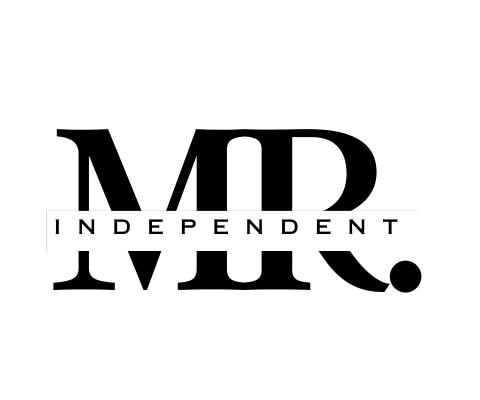Remember that time you stood at the edge of doing something scary, then noped right out of there? Yeah, you’re definitely not the only one.
That annoying voice in your head keeps whispering “play it safe” – but comfort zones are where dreams go to perish.
Want to know what’s gathering dust while you’re hiding in your cozy bubble? That career-changing promotion, that relationship you’re dreaming about, and those impressive skills you keep admiring in everyone else.
They’re all sitting pretty on the other side of that heart-racing, palm-sweating moment of pure terror. (Okay, maybe not pure terror. More like mild panic with a side of “what if?”)
Time to discover what actually happens when you finally stop making excuses and take that leap into the unknown. Reality: it’s way less scary than your brain is telling you.
Now, here are 13 life-changing things that only happen outside your comfort zone.
Key Takeaways
- Confidence and resilience are built by temporarily experiencing discomfort in unfamiliar situations.
- Hidden skills and talents are discovered when stepping beyond routine activities and self-imposed limitations.
- Mental barriers dissolve when directly challenged, revealing capabilities that existed all along.
- Innovative thinking emerges through cognitive restructuring required by new experiences and challenges.
- Authentic purpose and desires become clearer when comfort zones are abandoned for meaningful risks.
You finally learn how to handle rejection with grace.
Rejection stings – that’s just the honest truth. Whether it’s a job opportunity you desperately wanted, a romantic interest who doesn’t feel the same way, or a friend group that didn’t include you, each “no” can feel like a personal attack. When you venture outside your comfort zone, you’ll face rejection much more frequently, which initially sounds horrible.
However, this repeated exposure becomes your unexpected teacher, reshaping awkward, defensive reactions into composed responses that preserve your dignity and relationships.
The beautiful alteration happens gradually, almost without you noticing. You begin recognizing that rejection rarely reflects your worth as a person, but rather circumstances, timing, or simple preference differences.
This perspective shift allows you to respond with genuine appreciation for the opportunity, ask for constructive feedback when appropriate, and move forward without dwelling on what might’ve been.
The confidence you develop handling rejection gracefully becomes invaluable across all areas of life, enabling you to take bigger risks knowing that regardless of outcome, you’ll emerge intact, wiser, and ready for whatever comes next.
Confronting these common rejection myths helps transform limiting beliefs into opportunities for personal growth and resilience.
You realize fear rarely matches the actual outcome.
Living in the shadow of your own worst fears creates invisible walls that become psychological barriers much stronger than any physical obstacle could ever be.
When you finally gather the courage to step outside your comfort zone, you’ll discover a shocking truth that challenges everything your anxious mind has been telling you: what you feared almost never matches what actually transpires in reality. Your brain, that anxious little catastrophizer running on primitive fight-or-flight responses, has been feeding you distorted versions of potential outcomes.
The remarkable thing about fear is how it magnifies threats while minimizing our own resilience and capability to handle challenges. Unlocking life’s lessons requires embracing and conquering the very fears that hold us back.
| Fear vs. Reality | Misconceptions about Fear |
|---|---|
| Your fears: Total humiliation and permanent social rejection | Reality: Brief moments of mild discomfort, quickly forgotten by others |
| Your fears: Complete failure and career destruction | Reality: Valuable learning experience and character building |
| Your fears: Permanent rejection and lifelong loneliness | Reality: Temporary awkwardness and opportunity for growth |
| Your fears: Catastrophic public speaking disaster | Reality: Minor nervousness that audience rarely notices |
| Your fears: Devastating financial mistakes | Reality: Manageable setbacks with valuable lessons |
That presentation you were terrified to give turned out to be a minor blip in your day, and nobody even noticed your sweaty palms or slight voice tremor. The date you almost canceled due to overwhelming anxiety actually turned into an enjoyable evening with genuine laughter and connection.
The neural pathways that create our fear responses often overestimate threats while underestimating our ability to cope with challenges. Understanding this disconnect between perceived and actual outcomes can help rewire our stress response system, allowing us to approach uncertain situations with more confidence and realistic expectations.
You build confidence by surviving tough situations.
The beautiful paradox about building confidence is that it requires you to temporarily feel unconfident first.
Nobody feels amazing during their first marathon, job interview, or mountain climb—they feel terrified, awkward, and completely out of their element.
But that’s precisely the point. By deliberately placing yourself in challenging situations and then steering through them (however messily), you develop an internal resilience that can’t be faked.
Your comfort zone expands with each brave step, and situations that once seemed impossible gradually become just another thing you know you can handle.
Learning to face and embrace risk head-on is essential for personal growth and achievement.
You unlock creativity when routine no longer works.
When your brain encounters unfamiliar territory, it’s forced to abandon well-worn mental pathways and forge new neural connections through a process called cognitive restructuring.
This is where Creative Exploration happens—not in your comfortable routine where you’ve already mapped every possibility, but in the challenging spaces between what you know and what you’re discovering.
The brain’s natural neuroplasticity enables it to form these novel pathways when confronted with unexpected situations or problems. You’ll find your most brilliant ideas when you’re slightly lost, as this state of productive uncertainty triggers heightened awareness and mental flexibility.
| Comfort Zone Challenge | Unpredictable Inspiration Result |
|---|---|
| Travel to a new country | Discover design concepts from different cultures, architecture patterns, and indigenous problem-solving methods |
| Learn an unrelated skill | Apply unexpected techniques to your field, incorporating cross-disciplinary innovations and methodologies |
| Work in unusual locations | Break mental blocks through environment change, accessing new sensory inputs and spatial perspectives |
| Collaborate with strangers | Blend diverse perspectives into fresh solutions, leveraging varied cultural and professional backgrounds |
| Attempt “impossible” projects | Develop innovative approaches out of necessity, pushing beyond conventional limitations and assumptions |
Your brain craves the familiar, but it thrives on the new through a mechanism known as cognitive arousal. When routine stops working, don’t panic—celebrate, as this discomfort signals the beginning of neural growth and creative development!
The process of creative disruption actively challenges our established mental models and forces adaptation through necessity. This uncomfortable yet productive state generates what psychologists call productive confusion, a powerful catalyst for innovation and breakthrough thinking that occurs when we’re forced to question our fundamental assumptions about how things work or should be done.
Embracing discomfort consistently leads to personal breakthroughs and transformative growth experiences.
You grow faster by doing what feels unfamiliar.
Think back to a time when you learned something completely new—like the first time you drove a car or had to speak in front of people. That uncomfortable flutter in your stomach? That’s your growth alarm going off.
When we repeatedly do what feels comfortable, we’re primarily treading water in the same spot, mistaking motion for progress. The unfamiliar forces your brain to create new neural pathways, solving problems it hasn’t encountered before, which accelerates your personal development in ways that familiar activities simply can’t match.
The magic happens specifically because unfamiliar activities trigger mild stress responses—not the harmful kind, but the productive kind that makes you more alert and engaged.
Consider how children develop: they’re constantly doing things they’ve never done before, failing repeatedly, and growing at an astonishing rate.
Adults who consciously put themselves in unfamiliar situations—whether trying a different career path, traveling solo, or learning a challenging skill—report not only incremental improvements but significant changes in their confidence, adaptability, and overall life satisfaction.
The discomfort is temporary, but the expansion is permanent.
Taking consistent steps to break free from your usual routines creates lasting positive changes in how you approach challenges.
You meet people who challenge your old mindset.
Beyond your familiar social circles lies a wealth of perspectives that can fundamentally alter your worldview and reshape your understanding of reality.
When you step outside your comfort zone, you’ll bump into people who don’t just nod along with your beliefs—they’ll challenge them, sometimes uncomfortably, forcing you to examine your deepest-held convictions and preconceptions about the world.
These growth interactions aren’t always easy, but they’re worth it because they foster genuine personal development and intellectual expansion. The process of engaging with challenging viewpoints helps build emotional resilience and cognitive flexibility that serve you well throughout life.
| Type of Connection | Mindset Impact | Growth Outcome |
|---|---|---|
| Diverse viewpoints across cultures | Questioning ingrained assumptions | Expanded cultural awareness and empathy |
| Unforeseen professional connections | Breaking traditional thought patterns | Breakthrough solutions and career growth |
| Enlightening intellectual discourse | Paradigm shifts in core beliefs | Transformative personal development |
| Cross-generational exchanges | Challenging age-based biases | Bridge-building and mutual understanding |
| Contrasting political dialogues | Testing ideological foundations | Enhanced critical thinking skills |
You’ll find yourself having late-night discussions that leave you questioning assumptions you’ve held for years. Sometimes it’s a gentle nudge; other times it’s a perspective earthquake that completely reshapes your understanding.
The process of intellectual growth through challenging encounters often leads to unexpected discoveries about yourself and the world around you. These transformative experiences create ripple effects that influence not only your own perspective but also how you interact with and influence others in your expanding social network, creating a positive cycle of continuous learning and development.
The hidden costs of comfort can stagnate personal growth and prevent you from discovering your true potential.
You prove your limits were just mental barriers.
Most of the barriers we build in life exist only in our minds. When you finally push yourself to do that thing you’ve been avoiding—whether it’s public speaking, starting a business, or even just having a difficult conversation—you often discover something shocking: you were capable all along.
The mental obstacles that seemed so concrete and immovable were actually just elaborate fictions you constructed to protect yourself from potential failure or discomfort. Breaking through them reveals their paper-thin nature.
This realization is life-changing because it calls into question every other “I can’t” in your life. Once you’ve dismantled one mental barrier, you start to wonder which others might dissolve under pressure.
That mountain that looked impossible to climb from a distance? Up close, it’s just a series of manageable steps. The limitation wasn’t your ability—it was your perception of your ability.
When you step outside your comfort zone and succeed at something you thought impossible, you gain more than just a new skill or experience; you gain a fundamental shift in how you understand your own potential.
We often create self-imposed limits that become convenient excuses for avoiding growth and maintaining the status quo.
You become more adaptable to sudden change.
When life throws unexpected curveballs your way, you’ll notice a striking difference in how you respond after spending time outside your comfort zone. Your adaptability mindset strengthens each time you face something unfamiliar, much like how muscles develop micro-tears and rebuild stronger after exercise.
Consider it like training a muscle – the more you expose yourself to new situations, the quicker you bounce back from sudden changes. This process of neural adaptation creates new pathways in your brain that make future challenges feel more manageable and less threatening.
| Comfort Zone Behavior | Growth Zone Response | Real-Life Benefit |
|---|---|---|
| Panic at disruption, elevated heart rate, racing thoughts | Assess situation calmly, evaluate options methodically | Reduced stress hormones, better decision-making during crises |
| Resist change, maintain status quo at all costs | Embrace possibilities, actively seek new approaches | Discover unexpected opportunities, career advancement |
| Freeze in uncertainty, avoid making decisions | Take decisive action based on available information | Build leadership skills, earn team trust |
| Complain about problems, blame others | Seek creative solutions through collaboration | Become a valued problem-solver, improve workplace relationships |
| Avoid difficult situations, make excuses | Face challenges head-on with determination | Gain confidence and respect from peers and superiors |
The transformation from comfort-seeker to change-embracer creates lasting impacts across all aspects of life. This shift affects everything from professional development to personal relationships, as your increased resilience becomes apparent to those around you.
Your enhanced ability to navigate uncertainty becomes a valuable asset in both your career and personal growth, making you more likely to take on leadership roles and inspire others to push their own boundaries.
The ripple effect of this personal evolution extends far beyond immediate challenges, creating a foundation for continuous growth and achievement in an increasingly unpredictable world. Recognizing signs of growth readiness helps you identify the perfect moment to embrace new challenges and level up in life.
You discover skills you never knew you had.
You know that feeling when you suddenly realize you can do something you never thought possible? That’s what happens when you venture beyond your comfort zone—you uncover hidden talents buried beneath layers of routine and safety.
Remember how terrified you were of public speaking until that presentation you reluctantly agreed to give? Suddenly you discovered your knack for engaging an audience, something that would have remained dormant had you declined the opportunity.
These revelations aren’t flukes; they’re glimpses of your untapped potential waiting to be discovered through unfamiliar experiences.
The beauty of stepping outside familiar territory is that it forces you to adapt, problem-solve, and develop capabilities you didn’t even know existed within you.
Maybe you never saw yourself as particularly creative until you took that art class, or perhaps you discovered unexpected leadership qualities during a group project that initially terrified you.
These discoveries aren’t just nice surprises—they’re transformative realizations that expand your self-concept and open doors you previously couldn’t even see.
The uncomfortable truth? Many of your most valuable skills remain hidden until necessity or curiosity pushes you to find them.
Embracing daily challenges helps build the resilience needed to consistently push beyond your perceived limitations.
You learn resilience through trial, not theory.
Reading books about resilience isn’t the same as building it through real-world challenges, as theoretical knowledge rarely translates to practical strength. You’ll never develop mental toughness by simply understanding the theory, since true resilience requires facing genuine adversity and learning from direct experience.
Real growth happens when you face setbacks head-on and learn to bounce back, which creates lasting neural pathways that strengthen your capacity for handling future challenges.
| Experience Type | What It Teaches | How It Changes You |
|---|---|---|
| Public Speaking | Failure lessons, fear management, audience engagement | Emotional fortitude, enhanced communication skills, reduced anxiety |
| Solo Travel | Stress management, problem-solving in unfamiliar settings, cultural adaptation | Self-reliance, improved decision-making, increased adaptability |
| Hard Conversations | Conflict resolution, emotional intelligence, boundary setting | Greater confidence, stronger relationships, better negotiation skills |
| Competition | Strategic thinking, performance under pressure | Mental resilience, goal-setting abilities |
Trial experiences force you to develop a growth mindset, challenging your preconceptions about personal limitations. When you’re sweating through uncomfortable situations, you’re literally rewiring your brain for resilience building, creating new neural pathways that strengthen your ability to handle stress.
That presentation that terrified you taught you more about personal development than any self-help book ever could, fostering real-world competency through direct experience. The beautiful thing about stepping outside your comfort zone is that failure becomes your teacher, not your enemy, leading to authentic growth and lasting change.
Experiential learning creates deeper, more lasting changes than theoretical understanding because it engages multiple senses and emotional responses simultaneously. Each challenging experience serves as a building block in constructing a more resilient personality, transforming abstract concepts into concrete personal strengths through lived experience.
A 30-day growth challenge can provide the structured framework needed to systematically push beyond your comfort boundaries and accelerate personal development.
You stop needing external approval to act.
When you finally push beyond your comfort zone, something magical happens—you break free from the constant need for other people’s approval.
Remember all those times you hesitated to try something new because you worried what others might think? That invisible chain starts to loosen. Instead of texting five friends before making a simple decision or obsessively counting social media likes, you begin trusting your own judgment, acting on your own timeline, and pursuing what genuinely matters to you.
This newfound independence alters how you navigate life’s choices, big and small. You discover that most people are too wrapped up in their own concerns to scrutinize your decisions anyway.
With practice, you develop an internal compass that guides you based on your values rather than external validation. The beauty isn’t that you stop caring about feedback entirely—it’s that you gain the freedom to act without permission slips from others.
Your actions become more authentic, your path clearer, and ironically, the respect others have for you often deepens when they witness someone moving through the world on their own terms.
Understanding the pros and cons of stepping outside your comfort zone helps you make more informed decisions about when to push your boundaries.
You find clarity in unfamiliar discomfort.
Though it seems counterintuitive, the most confusing parts of life often become crystal clear once you’ve stepped into unfamiliar territory and challenged your existing patterns. That mental fog lifts when you’re forced to navigate without your usual crutches, creating space for genuine clarity to emerge through discomfort.
You suddenly see which relationships drain you and which ones genuinely nourish your soul, helping you distinguish between authentic connections and superficial ties. Your true dreams and aspirations rise to the surface while manufactured fears and limiting beliefs dissolve in the face of new experiences.
| Comfort Zone Habit | Outside Comfort Zone Revelation |
|---|---|
| People-pleasing: Saying yes to everything, avoiding conflict | Authentic self discovery: Setting boundaries, expressing honest opinions |
| Overthinking: Analysis paralysis, fear of judgment | Embracing ambiguity: Taking action despite uncertainty, trusting intuition |
| Emotional avoidance: Suppressing feelings, maintaining distance | Vulnerability acceptance: Expressing emotions openly, deepening connections |
| Fixed mindset: Avoiding challenges, fearing failure | Perspective shift: Viewing obstacles as opportunities, embracing growth |
| Autopilot living: Following routine blindly, resisting change | Intentional exploration: Seeking new experiences, conscious choice-making |
Try reflective journaling after uncomfortable experiences—you’ll uncover patterns you never noticed before. The messiness of discomfort actually sharpens your emotional intelligence and mindful navigation skills. It’s like cleaning your mental windshield with the exact thing you’ve been avoiding.
The process of embracing unfamiliar discomfort creates a powerful feedback loop that reinforces personal growth and self-awareness. Each time you step beyond your comfort zone, neural pathways strengthen and your capacity for handling uncertainty expands exponentially. This continuous cycle of challenge and adaptation builds resilience while simultaneously revealing deeper truths about your authentic nature and potential. The transformative power of discomfort lies not in the temporary unease it creates, but in the lasting clarity it provides about your path forward. Using empowering affirmations consistently can help you overcome the initial resistance to stepping outside your comfort zone.
You start leading instead of waiting to follow.
When you finally step outside your comfort zone, something magical happens—you naturally shift from being a passenger to the driver of your own life. Most of us spend years waiting for permission, instructions, or the “right moment” to take charge, but those moments rarely arrive on someone else’s schedule.
Instead, leadership emerges when you’re forced to navigate unfamiliar territory, make decisions without a safety net, and trust your own judgment even when your knees are shaking.
This change isn’t about becoming bossy or controlling; it’s about recognizing that waiting for others to lead you to your dreams is a guaranteed path to disappointment. Your unique vision requires your unique action.
When you venture beyond what feels safe, you quickly discover that nobody cares about your goals as much as you do, nobody understands your potential like you do, and frankly, nobody else should be steering your ship anyway.
The discomfort of leadership eventually becomes your comfort zone, and you’ll wonder why you spent so long in the passenger seat of your own journey.
Conclusion
Real change happens outside your comfort zone—not with sparkly unicorns and magical potions, but with actual, measurable results.
Nobody ever feels 100% ready. Those people you admire? They’re scared too. They just do it scared.
Stop waiting for perfect conditions. They don’t exist. You can stay cozy in your comfort bubble watching Netflix, or you can get uncomfortable and actually build the life you want.
The choice is yours. But that nagging feeling you have? It won’t go away until you jump.
FAQs
How Do I Recognize When I’m Making Excuses to Stay Comfortable?
Common signs of making excuses include rationalizing why you “can’t” do something, finding reasons to delay action, or blaming external circumstances for your lack of progress. To catch yourself in the act, notice when you say things like “I’ll start when…” or “I would, but…” These are usually comfort-protecting behaviors. Pay attention to your gut feeling – if you’re avoiding something important while having endless justifications for why “now isn’t the right time,” you’re likely making excuses. Combat this by asking yourself what you’re really afraid of and whether your reasons for inaction are truly valid or just ways to stay in your comfort zone.
What if My Comfort Zone Is Already Challenging Enough?
Your comfort zone might be genuinely challenging already, and that’s perfectly okay. Take an honest look at your daily activities – if they consistently push your boundaries and require real effort, you’re already on a growth path. Instead of forcing yourself into more challenges, focus on mastering your current ones and only expand when you feel truly ready. The key is to distinguish between productive discomfort that leads to growth and unnecessary stress that could lead to burnout. Start by listing your current challenges and rate how much they stretch you – this will help you identify areas where you might have more capacity for growth and others where you’re already working at your optimal level.
How Long Does It Take to Adapt to Discomfort?
Adapting to discomfort typically takes 2-8 weeks, though this timeline varies based on the type and intensity of the discomfort you’re experiencing. For minor inconveniences like a new sleep schedule or exercise routine, expect 1-2 weeks of adjustment. More challenging situations, such as chronic pain management or major lifestyle changes, often require 6-8 weeks for your body and mind to adjust. To speed up adaptation, try gradual exposure to the discomfort, practice mindfulness techniques, and maintain consistency in your approach. Remember that everyone’s adaptation period is unique, and factors like your stress levels, overall health, and previous experiences will influence how quickly you adjust.
Can Stepping Outside Comfort Zones Worsen Anxiety or Depression?
Yes, stepping outside comfort zones can worsen anxiety or depression if done too quickly or without proper support. Start with small, manageable steps that feel challenging but not overwhelming. Practice self-care techniques like deep breathing, mindfulness, or talking to a trusted friend when feeling anxious. Set realistic goals, celebrate small victories, and work with a mental health professional to develop a personalized approach for gradually expanding your comfort zone while managing your symptoms.
Should I Push Through Resistance Even When My Intuition Says No?
No, don’t push through resistance when your intuition strongly warns against it. Your gut instinct is a valuable internal compass that often detects red flags before your conscious mind can process them. While it’s important to challenge yourself and grow, learn to distinguish between normal fear of change and genuine warning signals. If something feels deeply wrong or unsafe, take a step back, analyze the situation, and consider alternative approaches that feel more aligned with your values and boundaries. When in doubt, slow down and gather more information before proceeding.
What things are outside your comfort zone?
Anything that makes you sweat a little—public speaking, starting a business, ending toxic relationships, cold showers, or saying “no” without apologizing.
What happens if a person only stays in their comfort zone?
Nothing happens. You stagnate. Life gets dull, predictable, and you start Googling “Why am I bored with my perfect life?”
What is an example of a problem outside your comfort zone?
Speaking up in a toxic workplace. You risk conflict, awkwardness, or even job loss—but the alternative is soul decay.
What is a famous quote about comfort zone?
“Life begins at the end of your comfort zone.” – Neale Donald Walsch. And no, that’s not just motivational-poster nonsense. It’s gospel.
Can getting uncomfortable really help you grow and reach goals?
Absolutely. Getting outside your comfort zone triggers growth, builds grit, and pushes you through the fear that’s been gatekeeping your potential.
Why do people fear stepping out of their comfort zone?
Because risk, rejection, and failure suck. But so does wasting your potential in a cocoon of “maybe later.”
How can I get better at stepping outside of my comfort zone?
Start small—say “yes” when you want to hide, take a new route, speak up once a day. It’s a muscle. Train it, don’t overthink it.
What lies outside our comfort zone that’s worth it?
Confidence, clarity, freedom, growth, passion, love—and sometimes a whole new life you didn’t know you were allowed to want.
Is it possible to live completely outside of our comfort zone?
Not forever. You need rest too. Growth cycles need breaks. But you can train yourself to live at the edges more often.
What’s the biggest life-changing thing that happens outside your comfort zone?
Self-discovery. You meet the version of you that isn’t limited by fear—and honestly, that person is a badass.









